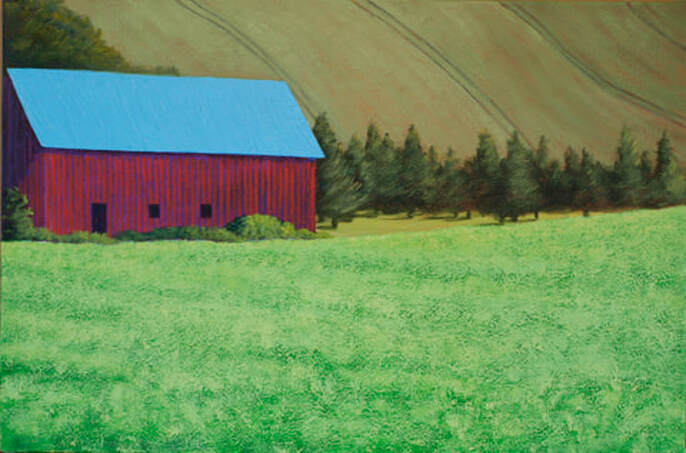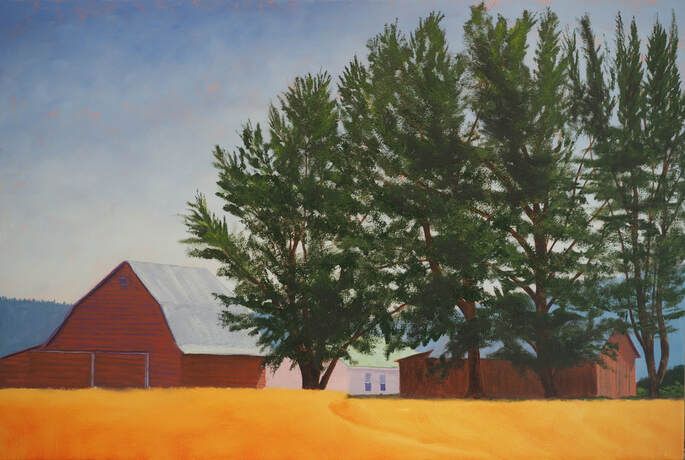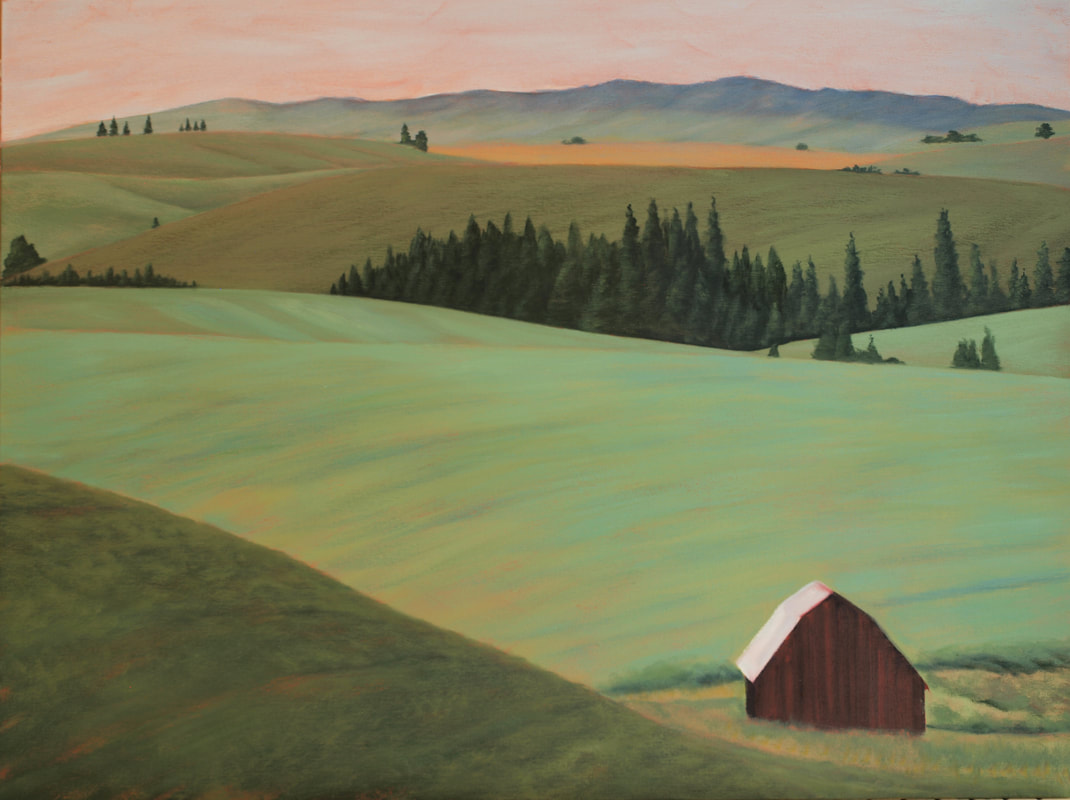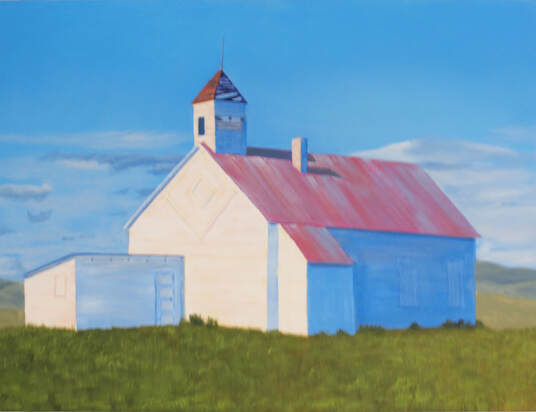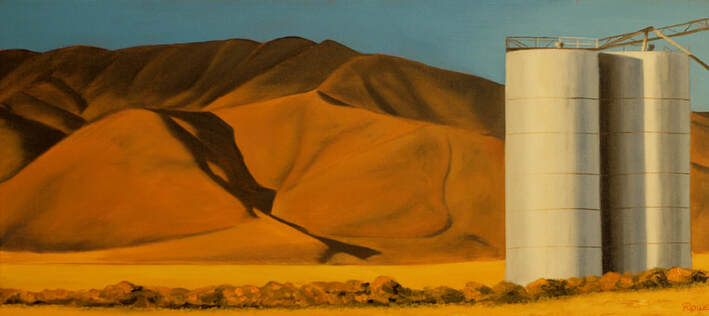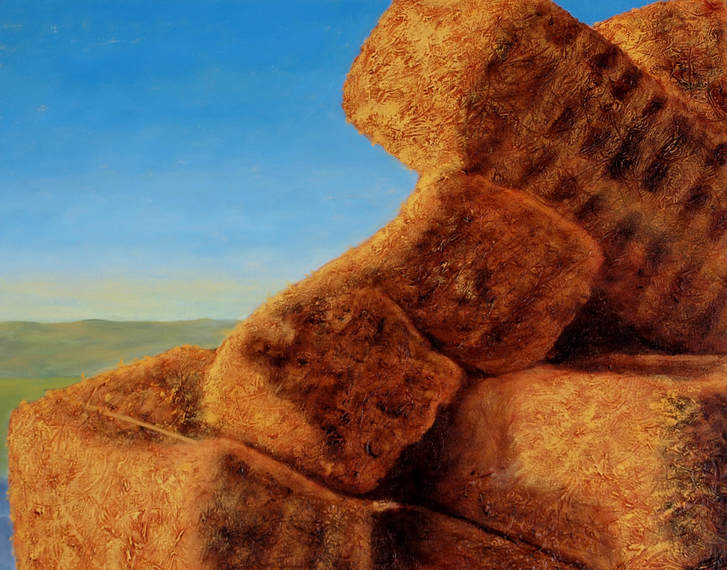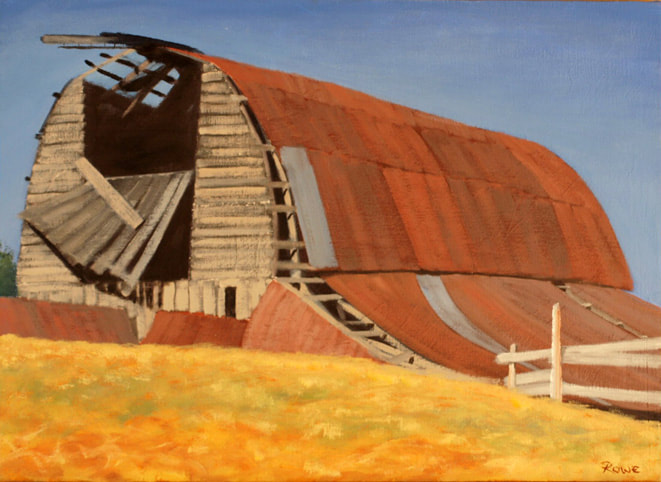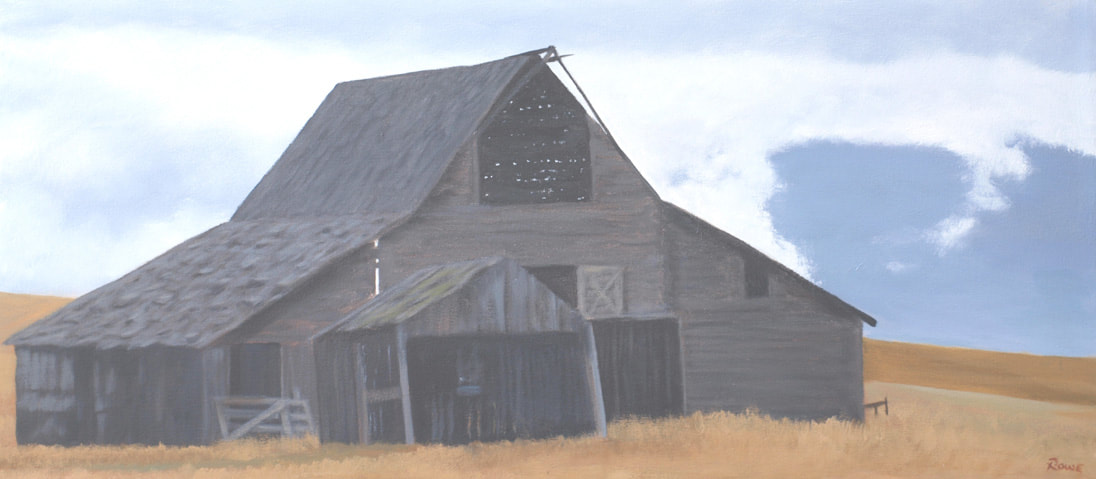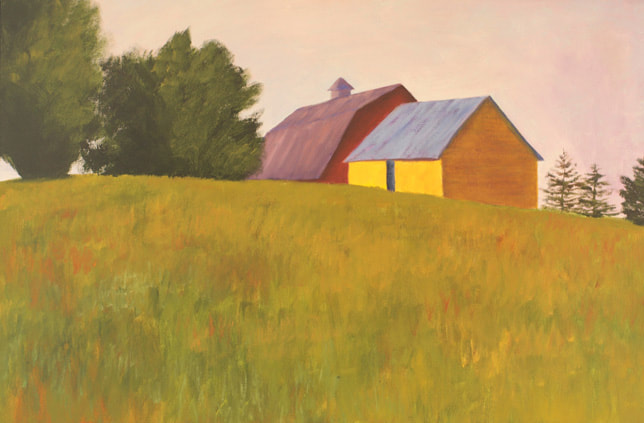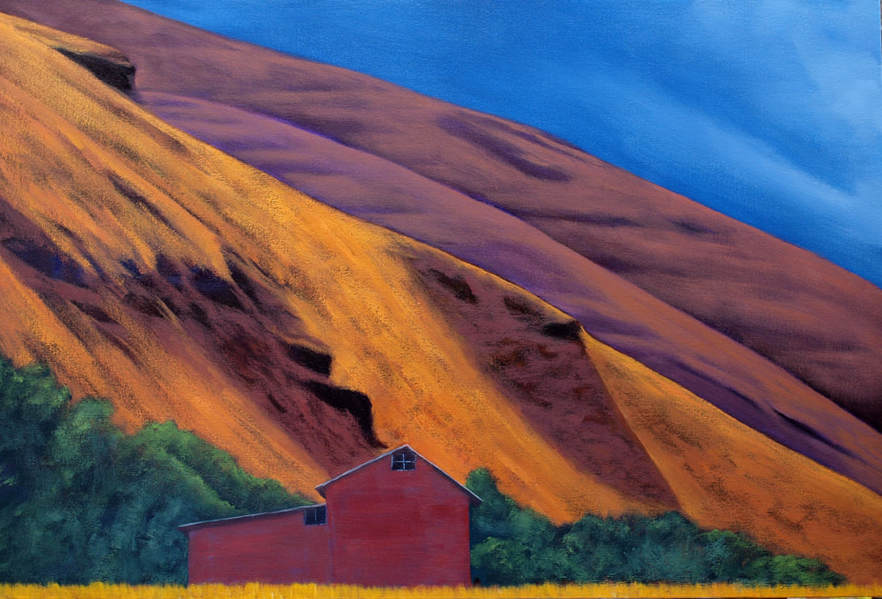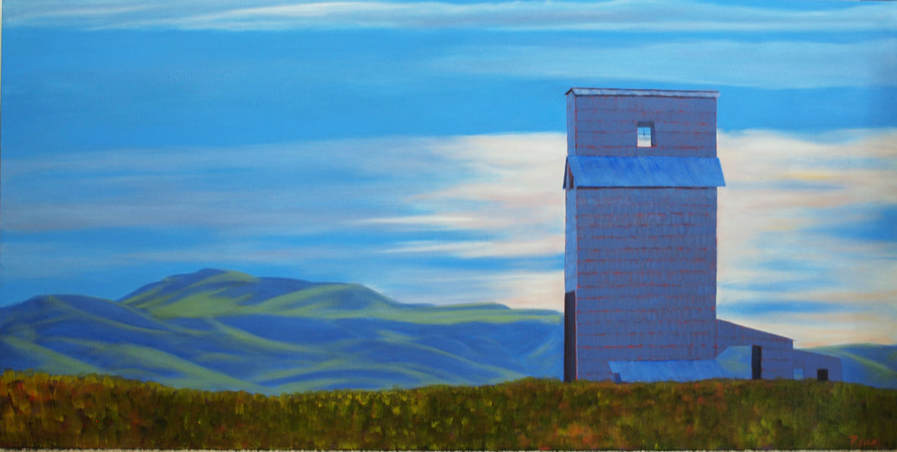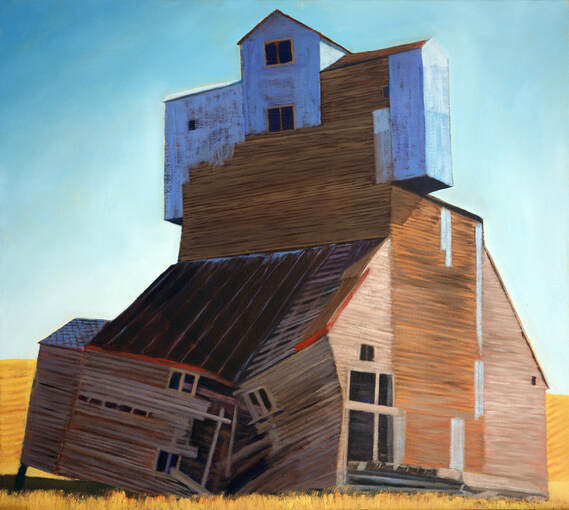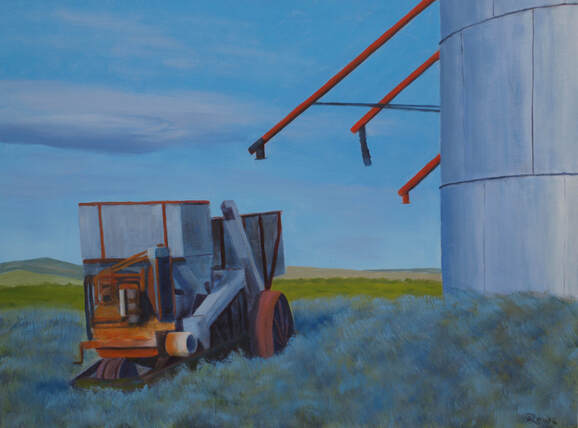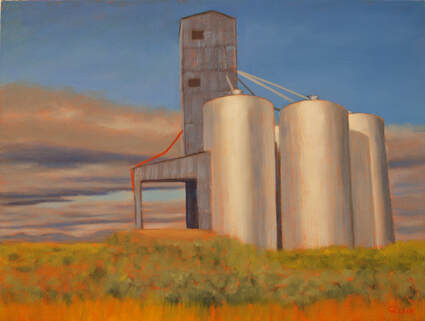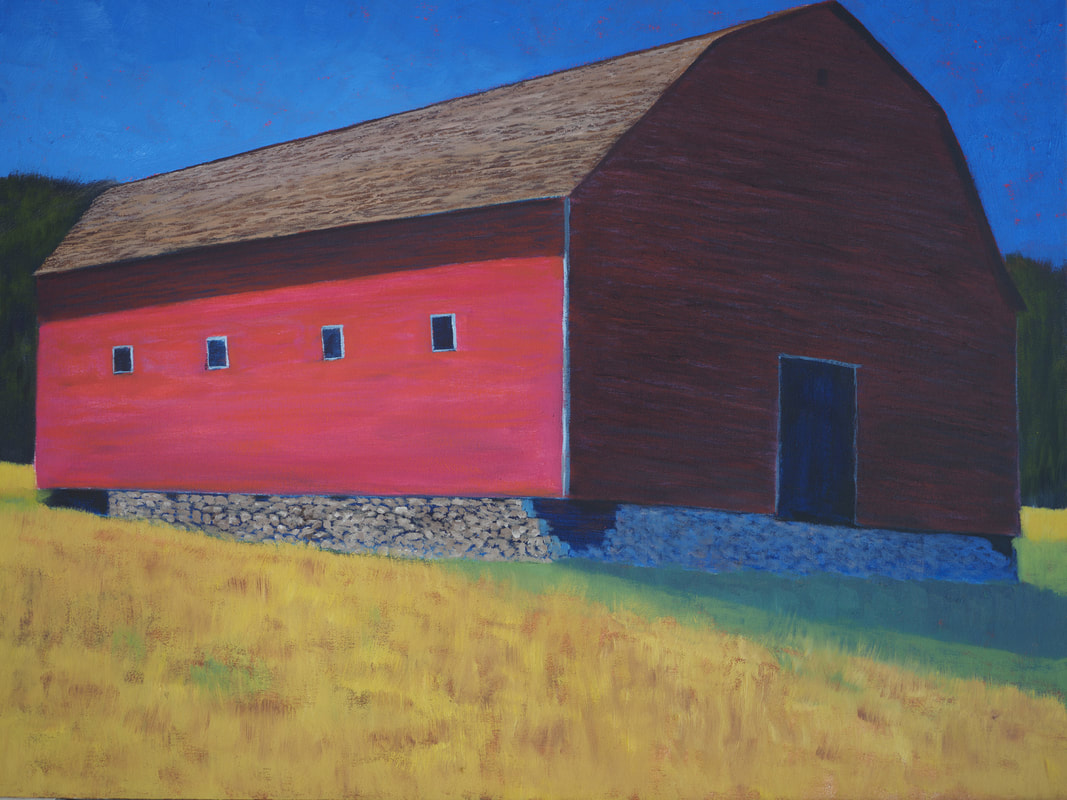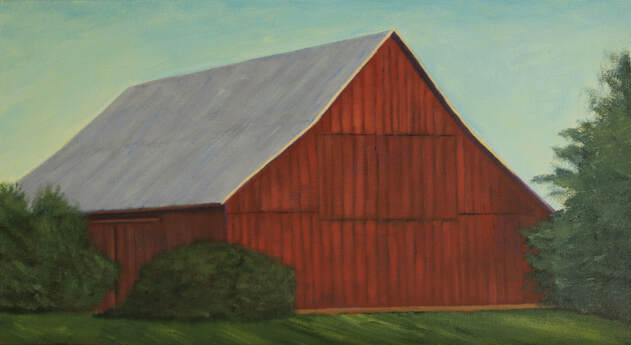I'm a country boy. Born and raised on a dairy farm in Illinois, I have no romance about farming. I know it's work, from dawn to dark, especially dairy farming. Those cows need milking twice a day or they explode. That's how they're bred, to be perpetually nursemaids, not for their young but for us.
Fortunately, my time on the farm was eleven years of naive bliss to it all. Too young to be useful and allergic to hay, I used the whole place for my private playground. Work? That was for my father and my older brothers. What I did acquire from those years was a love for animals, for open space and for the labor of the weather. Barns were jungle gyms, hay mows were for (sneezing) jumping recklessly, pens were for scaling. As an adult, those early experiences resulted in a passion for the preservation of the land, and a deep sympathy for the struggle other creatures endured to live with us on this planet. I think it partly explains my being drawn to becoming a landscape painter.
In the northwest, farm buildings tell stories of hopeful harvests, hard times and rejection. Barns especially catch my eye. Giant spaces I now envision housing dance companies, sculpture arenas, or trapeze training. As I age, I increasingly relate to the old structures abandoned in the field or near the old or missing home. They don't often get torn down, rather just left to fall ever so slowly down. That's an image I can relate to: left out in the field to just gradually relent to gravity. Maybe it's not a bad way to go.
Fortunately, my time on the farm was eleven years of naive bliss to it all. Too young to be useful and allergic to hay, I used the whole place for my private playground. Work? That was for my father and my older brothers. What I did acquire from those years was a love for animals, for open space and for the labor of the weather. Barns were jungle gyms, hay mows were for (sneezing) jumping recklessly, pens were for scaling. As an adult, those early experiences resulted in a passion for the preservation of the land, and a deep sympathy for the struggle other creatures endured to live with us on this planet. I think it partly explains my being drawn to becoming a landscape painter.
In the northwest, farm buildings tell stories of hopeful harvests, hard times and rejection. Barns especially catch my eye. Giant spaces I now envision housing dance companies, sculpture arenas, or trapeze training. As I age, I increasingly relate to the old structures abandoned in the field or near the old or missing home. They don't often get torn down, rather just left to fall ever so slowly down. That's an image I can relate to: left out in the field to just gradually relent to gravity. Maybe it's not a bad way to go.
